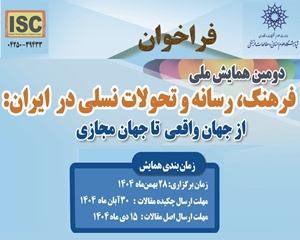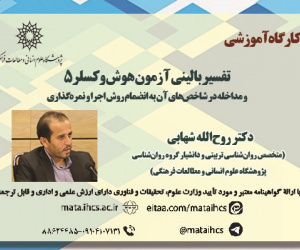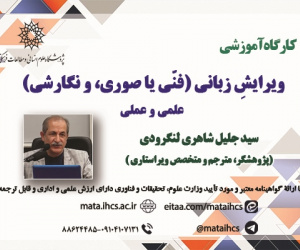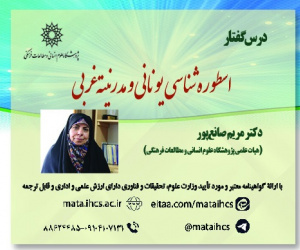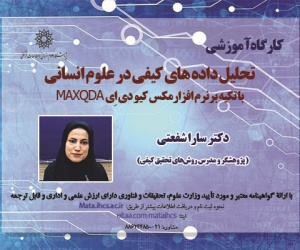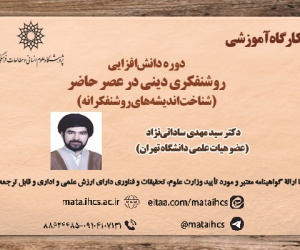رویکرد عرفانی و تمدنی طریقت مرشدیّه (سده های چهارم تا هشتم هجری) (مقاله علمی وزارت علوم)
درجه علمی: نشریه علمی (وزارت علوم)
آرشیو
چکیده
شیخ ابواسحاق کازرونی، از بزرگان صوفیه نیمه دوّم قرن چهارم و اوّایل قرن پنجم در کازرون بود. وی، پس از تحصیل نزد عارفان بزرگ آن زمان، طریقت ابوعبدالله محمدبن خفیف از صوفیان بزرگ شیراز را به دلیل انطباق با عقایدش برمی گزیند. شیخ ابواسحاق در راستای اعتقاداتش مجموعه مرشدیه را در شهر کازرون تأسیس می کند که در سده های بعد، گسترش یافت. در این راستا، نوشتار حاضر با روش کتابخانه ای و توصیفی- تحلیلی و با طرح این سؤال که، طریقت مرشدیّه در کازرون از چه جایگاه و اهمّیتی برخوردار گشت؟ کارکرد عرفانی و سیر تحوّل فرهنگی اقدامات عمرانی مجموعه مرشدیّه را در سده های چهارم، پنجم و هشتم هجری، بررسی می کند تا جایگاه و ارزش آن را تبیین نماید.نتایج پژوهش نشان می دهد که مجموعه مرشدیّه، بنایی با کارکردهای چند گانه شامل مسجد جامع، خانقاه و تحت السراج (اقامتگاه مریدان غریب) بود. این مجموعه، با هدف ترویج دین اسلام و دستگیری از مستمندان و مسافران شکل گرفت و با قرارگیری مقبره شیخ ابواسحاق در آن، به صورت مجموعه آرامگاهی تا قرن ها محل زیارت پیروان او شد. سپس در قرن هشتم هجری، شیخ امین الدّین بلیانی (از پیروان شیخ ابواسحاق)، بناهای عام المنفعه دیگری نیز به آن افزود. نکته مهم در مورد این مجموعه، تأثیر قابل توجه آن بر فرایند گسترش شهر کازرون می باشد که مسجد جامع شهر را نیز در بر می گرفته است. هم اکنون مقبره شیخ ابواسحاق، تنها اثر باقیمانده از مجموعه مرشدیه است که به دلیل شکل و ساختار معماری ویژه خود و همچنین ارتباط آن با رفتارهای آیینی، قابل توجه است.The mystical and civilizational approach of the Murshidiyya Tariqat (fourth to eighth centuries of Hijri)
Sheikh Abu Ishaq Kazrooni was one of the great Sufis of the second half of the 4th century and the beginning of the 5th century in Kazroon. After studying with the great mystics of that time, he chooses the Tariqat of Abu Abd Allah Mohammad Bin Khafif, one of the great Sufis of Shiraz, because it conforms to his beliefs. In line with his beliefs, Sheikh Abu Ishaq established the Morshidiya complex in the city of Kazroon, which expanded in the following centuries. In this regard, the present article is written with a library and descriptive-analytical method and by posing the question that, what position and importance did the Murshidiyeh tariqat enjoy in Kazeroon? It examines the mystical function and the course of cultural evolution of the construction measures of the Morshidiya complex in the fourth, fifth and eighth centuries of Hijri, to explain its position and value.The results of the research show that the Morshidiya complex was a building with multiple functions, including a mosque, a monastery, and Taht al-Sarraj (a residence of strange disciples). This complex was formed with the aim of promoting the religion of Islam and arresting the poor and travelers, and with the placement of the tomb of Sheikh Abu Ishaq in it, it became a place of pilgrimage for his followers as a tomb complex for centuries. Then, in the 8th century of Hijri, Sheikh Amin al-Din Belyani (one of the followers of Sheikh Abu Ishaq) added other non-profit buildings to it. The important thing about this collection is its significant impact on the expansion process of Kazeroon city, which includes the city''s Grand Mosque. Currently, the tomb of Sheikh Abu Ishaq is the only remaining work of the Morshidiya complex, which is remarkable due to its special architectural shape and structure, as well as its connection with ritual behaviors.
